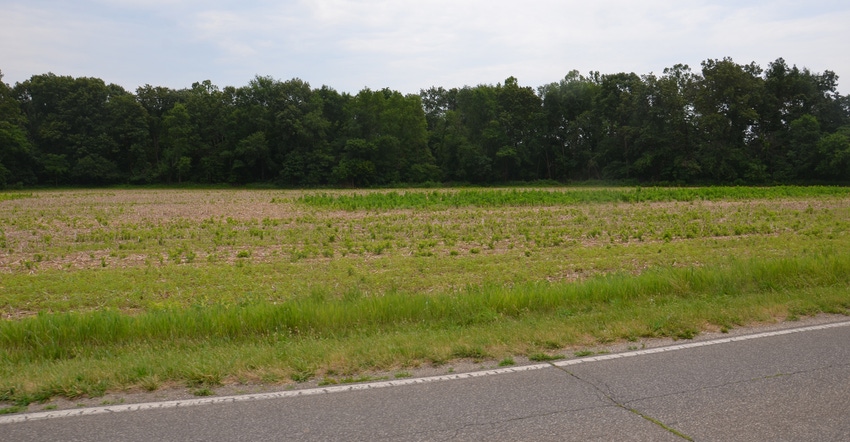
The Soybean Watch ’17 field hasn’t even been planted 30 days yet. It was planted June 6, all due to rain delays. Past history says it may be tough to harvest top yields from a crop planted that late, but soybeans tend to be more forgiving and sometimes harder to figure out than corn.
While the cooperator for Soybean Watch ’17 would prefer his plants were bigger at this point in the season, here are five fields scattered around the Midwest that he wouldn’t trade for!
Soybean Watch ’17 is sponsored by Beck’s, Atlanta, Ind.
1. Too thin — seed slot never closed on most of the field. What do you do if it’s May 25 and soybeans are still in the sack? You plant, even if it’s a bit tacky. And if it doesn’t rain within a few days, you wind up with open seed slots and uneven germination. That happened in one field we visited — not the Soybean Watch ’17 field. Rains a week or so later likely prevented replant.
2. Too thin — too many seedlings broke their necks. This might not have been the best year to give up on no-till and revert to conventional tillage. After 10 inches of rain pounded one field in that situation, soybeans were covered with extra dirt from soil erosion, and then baked in by the hot sun.
3. Crop damage — what did they put in that sprayer? When soybeans turn brown in strips a few days after the field is sprayed, there might be a problem. Fortunately, in this case, the whole field didn’t turn brown. There was some sort of pattern to the damage, but not clear-cut enough to determine exactly what happened. Whatever happened wasn’t particularly healthy for what was otherwise a good field of soybeans.
4. Thin and spindly — too many continuous years in soybeans. You likely can get away with planting soybeans after soybeans, at least without suffering big losses. But once you get to four or five years of soybeans after soybeans, you’ve got a monoculture that even soybeans don’t thrive well in. Maybe it’s due to disease buildup or nematode increases, or maybe it’s because the soil loses structure after too many years in soybeans. Based on the continuous soybean field spotted for this article, however, weeds — especially giant ragweed — seem to like that continuous monoculture environment just fine!
5. Tough competition — too many big weeds. Mention marestail and most people run away. If you don’t have that troublesome weed, you certainly wouldn’t want to trade for a field like the one pictured above that has a healthy population of it.
The problem with marestail, weed specialists say, is that once it takes off in the spring and gets any amount of height to it, it’s difficult to control with postemergence herbicides. Some farmers report they’ve seen the best control by spraying fields going to soybeans in the fall. They include a herbicide that takes care of marestail in that fall mixture. In most years, if marestail is a problem in the field, there will likely be a fair number of plants emerged by the time you would make a fall application.
Others say a cover crop helps hold back marestail in the spring. Unfortunately, cover crops and fall herbicide applications don’t go together.
About the Author(s)
You May Also Like




